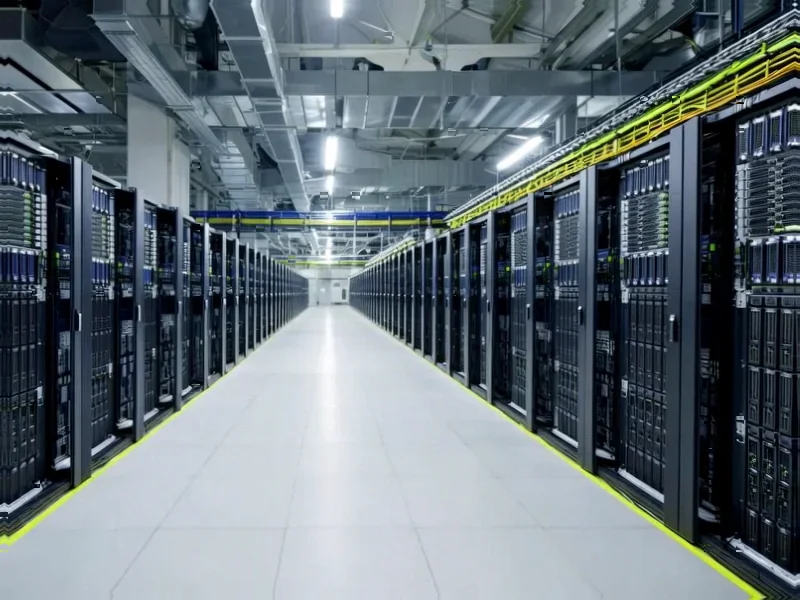According to CNBC, OpenAI has signed a $38 billion compute agreement with Amazon Web Services announced on Monday, marking the AI company’s first partnership with a cloud provider beyond Microsoft. Under the deal, OpenAI will immediately begin running workloads on AWS infrastructure, accessing hundreds of thousands of Nvidia GPUs across U.S. data centers with plans to expand capacity in coming years. Amazon stock climbed approximately 5% following the announcement, with AWS vice president Dave Brown confirming that “completely separate capacity” is being deployed, some of which is already available for OpenAI’s use. The initial phase utilizes existing AWS facilities, with Amazon committing to build additional infrastructure specifically for OpenAI’s requirements. This strategic partnership represents a significant departure from OpenAI’s previous exclusive cloud arrangement.
The Technical Architecture Shift
The migration to AWS infrastructure represents one of the most complex distributed computing transitions in recent memory. OpenAI’s models, particularly GPT-4 and its successors, require specialized tensor processing optimizations that were previously fine-tuned exclusively for Microsoft’s Azure infrastructure. The technical challenge involves not just moving petabytes of model weights and training data, but re-architecting the entire inference pipeline to work across heterogeneous cloud environments. This multi-cloud strategy introduces new complexities in latency management, data synchronization, and failover mechanisms that OpenAI’s engineering team must now solve at unprecedented scale.
The GPU Capacity Reality Check
While “hundreds of thousands of Nvidia GPUs” sounds impressive, the actual computational throughput depends heavily on the specific GPU models and cluster configurations. AWS offers multiple GPU instance families including the latest P4 instances with A100 and H100 processors, but also older generations that may not deliver optimal performance for transformer-based models. The real bottleneck isn’t just raw GPU count—it’s the interconnects between them. OpenAI’s largest models require ultra-low latency networking between thousands of GPUs simultaneously, which means AWS must deploy specialized infrastructure like their Elastic Fabric Adapter technology to prevent communication bottlenecks from crippling training efficiency.
Strategic Implications Beyond Compute
This deal fundamentally alters the cloud AI competitive landscape. Microsoft’s exclusive partnership with OpenAI gave them a significant advantage in attracting AI workloads to Azure. Now, AWS gains access to the industry’s most advanced AI models directly within their ecosystem, potentially accelerating adoption of their SageMaker platform and other AI services. For OpenAI, this diversification reduces dependency on a single provider while giving them leverage in future negotiations. However, it also introduces new operational complexity and potential conflicts in managing relationships with two cloud giants who are direct competitors across multiple business segments.
The Infrastructure Build-Out Challenge
Building “completely separate capacity” for OpenAI represents a massive capital expenditure commitment from Amazon that extends beyond just purchasing GPUs. Each data center region requires specialized power and cooling infrastructure capable of handling dense AI workloads, with some estimates suggesting AI clusters can consume 10-20 times more power per rack than traditional cloud computing. The timeline for these builds is critical—OpenAI’s roadmap depends on having this capacity available for training increasingly larger models. Any delays in data center construction or GPU procurement could impact OpenAI’s product development schedule, creating significant pressure on AWS’s infrastructure teams to deliver on aggressive timelines.
Broader Market Impact
This partnership signals that even the most advanced AI companies cannot build sufficient compute capacity independently. The $38 billion commitment—likely spread over multiple years—demonstrates the staggering capital requirements for staying competitive in frontier AI development. This deal may pressure other cloud providers to offer similar dedicated infrastructure arrangements, potentially creating a tiered market where only the largest players can afford to train cutting-edge models. Meanwhile, enterprises considering AI investments must now evaluate whether to build on Azure, AWS, or pursue multi-cloud strategies themselves, adding complexity to their technology roadmaps.




